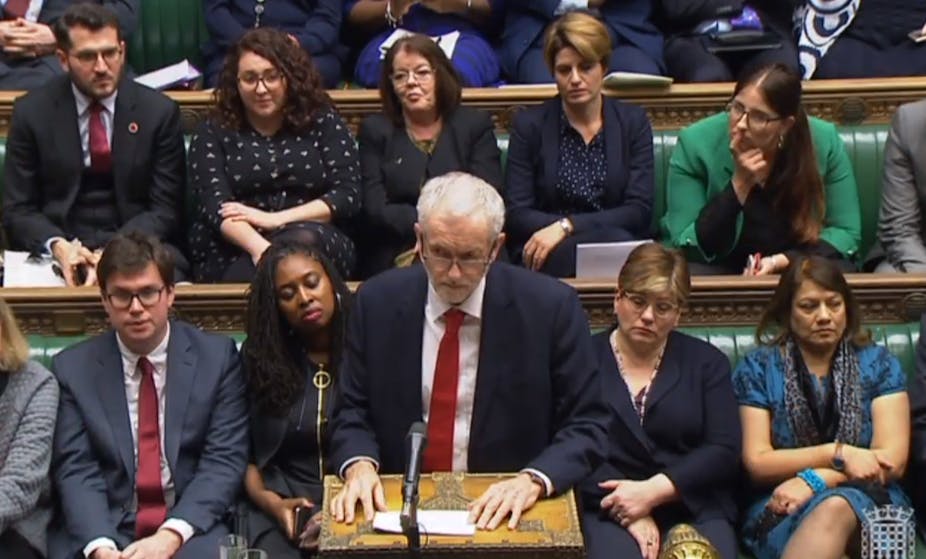The Labour Party is frequently criticised for sitting on the fence over Brexit. The party leadership has, most notably, avoided making a definite commitment to a second referendum, which might deliver a Remain vote.
This stance can in part be attributed to the fact that 60% of the seats the party won in the 2017 election had Leave majorities in the 2016 referendum. At the same time, there is strong pressure from Labour’s supporters both in the party membership and among the voters for the party to advocate remaining in the EU. This is particularly true of young supporters. As long as the Brexit turmoil continues, then Labour is going to face this dilemma.
As a result, it is often said that Labour MPs who represent Leave voting constituencies – such as Caroline Flint in Don Valley – are afraid to speak out against Brexit for fear that they will lose their seat in the next election.

But the evidence actually suggests that they shouldn’t be so worried that their chances of re-election will be jeapordised if Labour comes out as a Remain party. The political consequences of being a Remain MP in a Leave voting constituency have been overblown. In fact, the issue is likely to have little or no effect on the vote in the next general election. This can be seen by looking at the relationship between the referendum vote in 2016 and the Labour vote in the general election of 2017.
To put this in context, if we compare the Labour vote share in the 632 constituencies in Britain in 2017 with the vote share in the previous election in 2015, the relationship between the two is extremely strong. The figure below demonstrates this. Each dot in the figure is a constituency. The vertical axis measures the Labour vote share in 2017 and the horizontal axis the 2015 vote share.

The relationship between voting in 2015 and in 2017 is very close because the vast majority of the dots cluster closely around the summary line, which identifies the average relationship at each point. It shows that, by and large, constituencies with weak Labour support in 2015 remained that way in 2017, as did constituencies with strong Labour support. The correlation between the vote shares in the figure is 0.96, which is near perfect and means that the 2015 vote share is a very powerful predictor of the 2017 vote share.
The relationship occurs because there is a lot of inertia in electoral politics. Changes do occur between successive elections but these are relatively small in comparison with the strong continuities found in voting over longer periods of time.
The Brexit issue was important in the 2017 election but if it had been so important that Remain supporting Labour MPs in Leave voting constituencies were punished by the voters, we would observe this in the data. It would mean that the Labour vote share would decline, or increase less, in constituencies that strongly supported Leave in the referendum compared with constituencies which supported Remain.
In fact, as the second figure shows, there is no relationship at all between the change in the Labour vote in the successive elections and voting to leave the EU in the referendum. The correlation between these two is -0.04, which is negligible.
This means that the summary line linking the two measures is flat, so that Labour MPs in Remain voting constituencies were treated in much the same way by the voters as Labour MPs in Leave voting constituencies. Given that the 2017 general election took place about a year after the referendum, if the Brexit vote was influential, it would have affected the change in Labour’s share of the vote.

It is worth remembering that UKIP won the 2014 European elections in Britain, but three years after that victory the party was almost wiped out in the general election. We are three years away from the official date of the next general election in 2022, suggesting that this pattern is likely to be repeated as memories fade. Labour Remainers have nothing to worry about, despite the current popularity of Nigel Farage’s Brexit Party.

